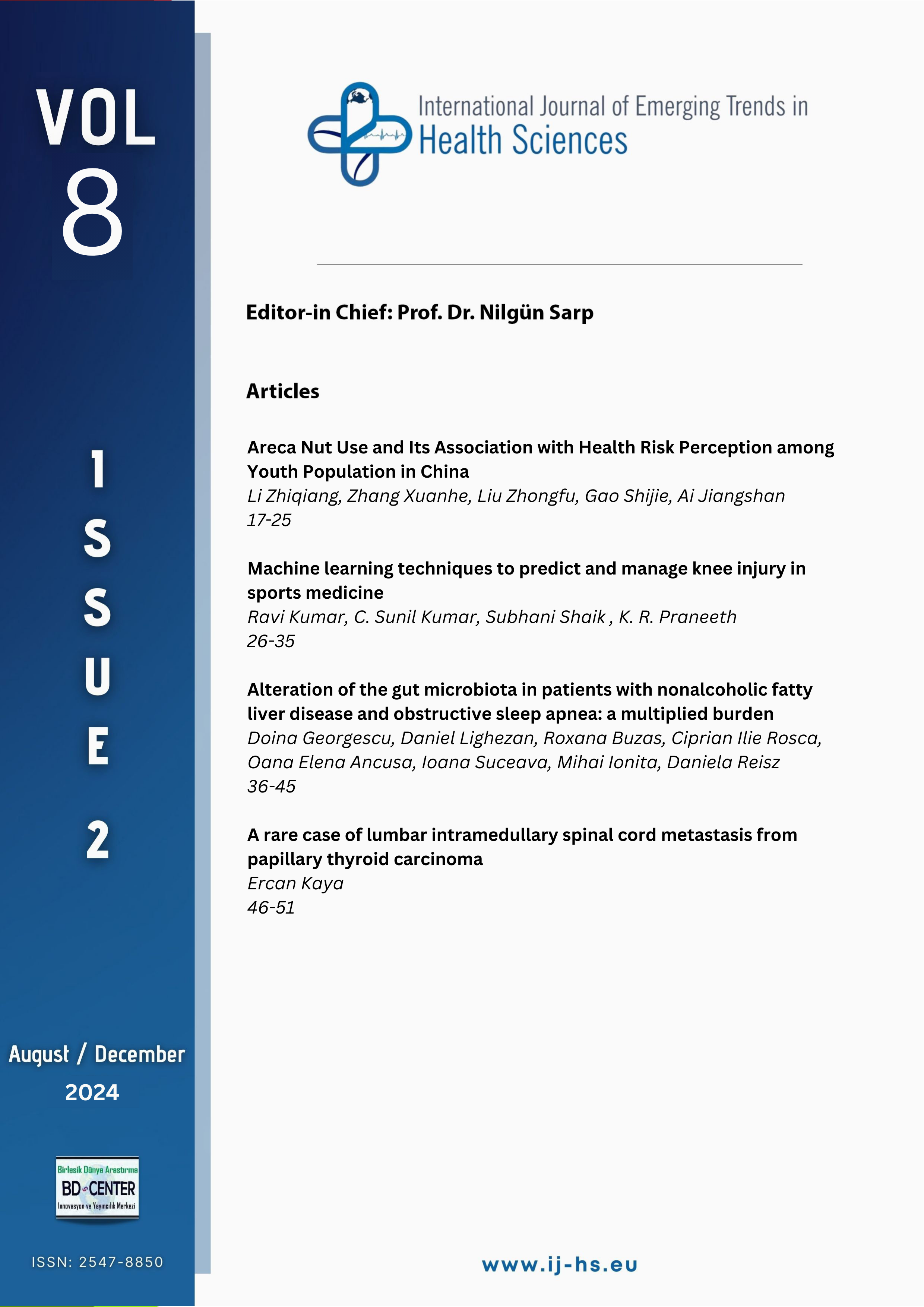Machine learning techniques to predict and manage knee injury in sports medicine
Main Article Content
Abstract
The aim of this study is to conduct a complete review of the current state of Machine Learning (ML) in injury prediction and prevention. In recent years, there has been a growing importance in the application of ML techniques to find out and reduce risks associated with injuries, particularly in high-risk industries such as sports, healthcare, and manufacturing. The essential part of our body is the knee, sports persons commonly injuries during play games. Sports injuries result in stress & strain connected with athletic events. Sports wounds can affect soft tissue (ligaments, muscles, cartilage, and tendons). Injuries are common in sports and can have significant physical, psychological, and financial consequences. The aim of our study was therefore to perform a systematic review of Machine learning (ML) techniques that could be used to improve injury prediction and prevention in sports. ML algorithms play a crucial role in extracting accurate information from given images and they also handle the complex pattern of MRI knee-related clarifications. In this paper, discuss a real-life imagery rule, ML design used to recognize meniscus tears, bone marrow edema, and general abnormalities on knee MRI tests accessible. The final evaluation demonstrated the highest accuracy achieved by the support vector machine, closely followed by the KNN model and the RF Tree method, all yielding comparable performance levels.
Keywords: MRI images, SVM, Random Forest, KNN, Automated analysis, ACL Injury, Machine Learning
Downloads
Article Details

This work is licensed under a Creative Commons Attribution-NonCommercial-NoDerivatives 4.0 International License.
Authors who publish with this journal agree to the following terms:
- Authors retain copyright and grant the journal right of first publication with the work simultaneously licensed under a Creative Commons Attribution License that allows others to share the work with an acknowledgement of the work's authorship and initial publication in this journal.
- Authors are able to enter into separate, additional contractual arrangements for the non-exclusive distribution of the journal's published version of the work (e.g., post it to an institutional repository or publish it in a book), with an acknowledgement of its initial publication in this journal.
- Authors are permitted and encouraged to post their work online (e.g., in institutional repositories or on their website) prior to and during the submission process, as it can lead to productive exchanges, as well as earlier and greater citation of published work (See The Effect of Open Access).
